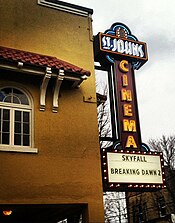
The Oregon Historical Society(OHS) is an organization that encourages and promotes the study and understanding of the history of the Oregon Country, within the broader context of U.S. history. Incorporated in 1898, the Society collects, preserves, and makes available materials of historical character and interest, and collaborates with other groups and individuals with similar aims. The society operates the Oregon History Center that includes the Oregon Historical Society Museum in downtown Portland.

St. Johns is a neighborhood of Portland, Oregon, United States, located in North Portland on the tip of the peninsula formed by the confluence of the Willamette River and the Columbia River. It was a separate, incorporated city from 1902 until 1915, when citizens of both St. Johns and Portland voted to approve its annexation to Portland, which took effect on July 8, 1915.

The Arlene Schnitzer Concert Hall is a historic theater building and performing arts center in Portland, Oregon, United States. Part of the Portland Center for the Performing Arts, it is home to the Oregon Symphony, Portland Youth Philharmonic, Metropolitan Youth Symphony, White Bird Dance Company, and Portland Arts & Lectures. It is also a concert and film venue. Originally the Paramount Theatre, it is also locally nicknamed "The Schnitz".

The Oregon Symphony is an American symphony orchestra based in Portland, Oregon, United States. Founded as the 'Portland Symphony Society' in 1896, it is the sixth oldest orchestra in the United States, and oldest in the Western United States. Its home venue is the Arlene Schnitzer Concert Hall in downtown Portland's Cultural District.

The Hollywood Theatre is a historic movie theater in northeast Portland, Oregon, owned by a non-profit organization. It is the central historical point of the Hollywood District. The Theatre is located at 4122 NE Sandy Blvd, across the street from the first suburban Fred Meyer store, which is currently occupied by Rite Aid. The Hollywood Theatre was placed on the National Register of Historic Places in 1983 and is considered to be a gem of Northeast Portland's historic culture and tradition.
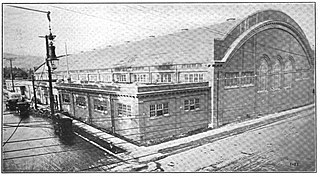
The Portland Ice Arena, also called the Portland Ice Hippodrome or the Portland Hippodrome, was a 2,000-seat multi-purpose arena located in northwest Portland, Oregon, United States. It was home to the Portland Rosebuds Pacific Coast Hockey Association franchise from 1914 and 1918 and the Portland Penguins from 1928 to 1941.

A multiplex is a movie theater complex with multiple screens within a single complex. They are usually housed in a specially designed building. Sometimes, an existing venue undergoes a renovation where the existing auditoriums are split into smaller ones, or more auditoriums are added in an extension or expansion of the building. The largest of these complexes can sit thousands of people and are sometimes referred to as a megaplex.

Malco Theatres, Inc. is a movie theatre chain that has remained family owned and operated for over one hundred years. It has been led by four generations of the Lightman family. The company has 36 theatre locations with over 371 screens in six states. Malco also operates three bowling centers and a family entertainment center in southern Louisiana and a family entertainment center in Oxford, MS.
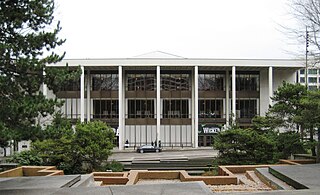
Keller Auditorium, formerly known as the Portland Municipal Auditorium, the Portland Public Auditorium, and the Portland Civic Auditorium, is a performing arts center located on Clay Street in downtown Portland, Oregon, United States. It is part of the Portland's Centers for the Arts. Opened in 1917, the venue first changed names in 1966, being renamed again in 2000 in honor of a $1.5 million renovation donation by Richard B. Keller. An extensive remodeling and modernization in 1967–68 effectively changed its original exterior appearance beyond recognition.

The Majestic Theatre is a performing arts theater in the City Center District of Downtown Dallas. It is the last remnant of Theater Row, the city's historic entertainment center on Elm Street, and is a contributing property in the Harwood Street Historic District. The structure is a Dallas Landmark and is listed on the National Register of Historic Places.
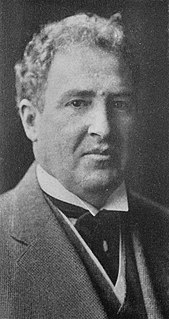
John Virginius Bennes was an American architect who designed numerous buildings throughout the state of Oregon, particularly in Baker City and Portland. In Baker City he did an extensive redesign of the Geiser Grand Hotel, designed several homes, and a now-demolished Elks building. He moved to Portland in 1907 and continued practicing there until 1942.
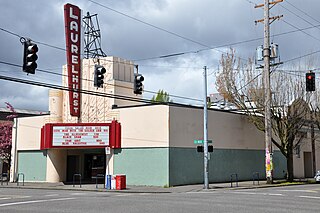
Laurelhurst Theater is a movie theater located in the Kerns neighborhood in northeast Portland, Oregon. Known for showing first and second-run films and for serving food and beer, the theater was constructed in 1923 with an Art Deco design.

The Clinton Street Theater is a theater located in southeast Portland, Oregon. It is believed to be the second oldest operating movie house in the city and one of the oldest continually operating cinemas in the United States. The theater was designed by Charles A. Duke in 1913, built in 1914, and opened as The Clinton in 1915. It became known as the 26th Avenue Theatre in 1945 and the Encore in 1969, before reverting to a resemblance of its original name in 1976. The Clinton often screens grindhouse, cult and experimental films, and has become known for hosting regular screenings of The Rocky Horror Picture Show and Repo! The Genetic Opera. The venue also hosts the annual Filmed by Bike festival, the Faux Film Festival and the Portland Queer Documentary Film Festival.
The following is a timeline of the history of the city of Portland, Oregon, United States.
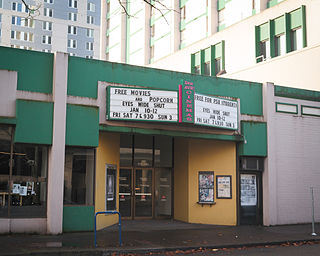
The 5th Avenue Cinema is a two-screen, 35-millimeter projection theater at 510 Southwest Hall Street in Portland, Oregon, in the United States, owned by Portland State University (PSU) and operated by the student-managed PSU Film Committee. Each term the committee selects a variety of films, often world cinema or art films, and screening is free to PSU students. The cinema is open to the public for a nominal fee.

The Portland Woolen Mills were a wool textile manufacturer in the St. Johns neighborhood of Portland, Oregon. By 1950, they had become the largest wool manufacturer west of Cleveland, Ohio. The origins of the factory started in Sellwood in 1901 but after a fire destroyed the mill two years later owners decided to rebuild in St. Johns. Portland Woolen Mills offered several worker programs including baseball, basketball and bowling teams; a cafeteria and a library.

Cinema 21 is a movie theater in the Northwest District of Portland, Oregon, United States. The venue opened as State Theatre in 1925, and was known as Vista during 1941–1942 and 21st Avenue Theatre from 1942 to 1965.

La Center was a small stern-wheel steamboat that operated from 1912 to 1931, mostly on the Lewis and Lake rivers in southwest Washington, on a route to and from Portland, Oregon along the lower Columbia and lower Willamette rivers.

Vivian Augustus Marshall was an American diver, vaudeville performer and film actress. Born in California, Marshall's family moved to Oregon during her youth and she gained notoriety for her aquatic skills while a member of the Multnomah Athletic Club in Portland and later performed public stunt dives from heights of 70 feet and above. She also performed a signature stunt called the "fire dive", in which she would douse her baiting suit in wood alcohol, light it with a match and perform a high dive into the water to extinguish the flames. Marshall worked for vaudeville producer Alexander Pantages and acted in motion pictures in Los Angeles, California. She was married to actor Otto Fries and they had two children, Sherwood Marshall and Ottilie Vivian.

At the advent of the 20th century, the city of Portland, Oregon, was among the first on the United States West Coast to embrace the advent of the silent and feature film. The city's first movie palace, the Majestic Theatre, opened in 1911. By 1916, Portland had "the finest array" of movie houses on the West Coast relative to its population, pioneering venues dedicated exclusively to screening films. The popularization of the sound film in the early 1920s resulted in another boom of new cinemas being constructed, including the Laurelhurst, the Hollywood Theatre, and the Bagdad Theatre, the latter of which was financed by Universal Pictures in 1926.
